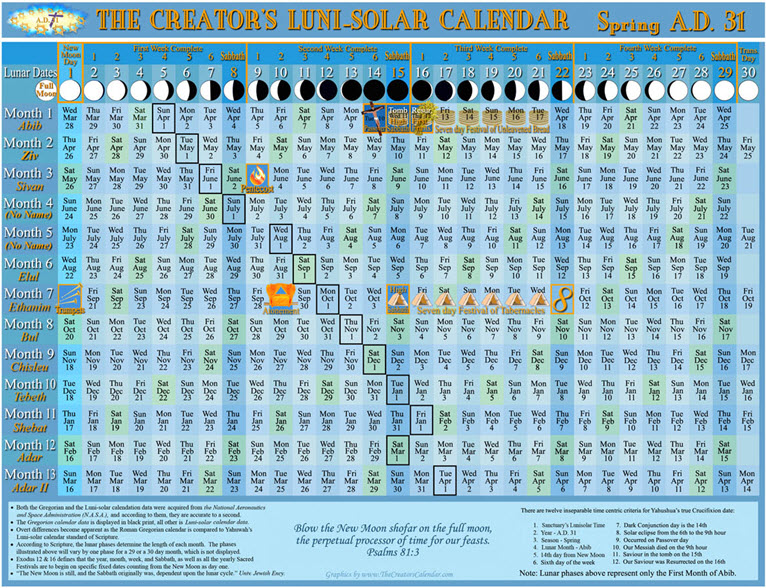Letter from Pontius Pilate
Letter from Pontius Pilate
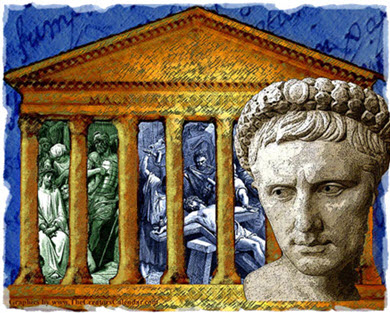
Preface by Kerrie French
The following letter ascribed to Pontius Pilate is of a profound nature and, for the most part, appears to be the letter sent from Pilate to Tiberius Caesar nearly 2000 years ago. However, the mere fact that it is in accordance with a copy at the British Museum does not guarantee that either of them represents the full, unadulterated truth of what was written by Pilate’s own hand. For example, this document’s date is curiously absent, a necessary feature of great magnitude and a requirement second only to the events themselves. However, the “Ides of March” is mentioned, which will be discussed later.
I believe this letter succumbed to the early form of alterations, of which much later in the thirteen century was called the “Correctories” of Rome. During the 300 years between the Crucifixion of the Messiah and the Council of Nicaea, 321-325 B.C, a type of “correctors” were hired to change or “alter” the verses of Scripture, as well as all the historical manuscripts to bring harmony between paganism, Scripture, and the calendar of events of the death, and resurrection of the Messiah.
“In the year 325 A.D. was perpetrated one of the most colossal frauds and deceptions in the annals of history. This was the date of the Council of Nicea, whose task it was to create a new religion that would be acceptable to Emperor Constantine…” The Historical Apollonius Versus the Mythical Jesus, By Dr. R. W. Bernard, Ph.D.
“In order to make the previously despised cult of the Early Christians [The Messiah followers called themselves Natsarim but were at the time called Quartodecimen by the Romans. The term “Christians” was the creation of Constantine in the 4th century A.D.] acceptable to Constantine, emperor of Rome – the new (pagan) Church Fathers had to remove from its teachings certain doctrines which they knew were objectionable to Constantine. To accomplish this, certain “correctors” were hired, whose task it was to rewrite the Gospels.” -Apollonius the Nazarene Part 1: The Historical Apollonius Versus the Mythical Jesus By Dr. R. W. Bernard, Ph.D.
“The Council of Nicea was a pivotal event in the history of Christianity [The Messiah followers called themselves Natsarim but were at the time called Quartodecimen by the Romans. The term “Christians” was the creation of Constantine in the 4th century A.D.]. The sudden adoption of a quasi-philosophic term to define the historic Jesus as equal to God was a major departure from Scripture and tradition. Further, the use of this term “trinity” in a Creed meant that, from A.D. 325 on, Nicenes could and did proclaim other dogmas that have no basis in Scripture.” – State Church of the Roman Empire; Ben H. Swett; 1998
Make no mistake, damage to the original documents had long since been done at the time of the Council of Nicea (A.D. 325) and then again in the thirteenth century. I believe this was covertly done with the aid of and in league with, top Semitic scholars of the day. Their motivation may have come from the need to remove themselves as far from the time-centric incriminating evidence that perpetually exposed their guilt and the part they played in the death of the Messiah.
Article links:
Constantine’s Creation of Jesus Christ
The Constantinian Creed, the Foundation of All Christian Churches
This may be why there are so many contradictions that have kept Scripture believers in hours of debate and confusion. After all these years, it is difficult to say for sure which portions were altered and which were not. There are some insertions that most scholars recognize as being false that came through both the Jewish and Roman corruptive influence on the Scriptures.
The prophet Daniel warned that this would happen (Daniel 7:25), declaring that the “beast power” would seek to change the very “times and laws” of Yahuah. Might this “beast power” be the amalgamation of Jewish and Roman leaders?
Great care has indeed been given by the “beast power” to ensure consistency among falsified manuscripts, but they have slipped up here and there, which you will see. We can, therefore, have confidence that ALL historical and Scriptural documents have been processed through the “Correctories,” organized for the purpose of changing Yahuah’s times and laws.
As you read through this “declared” historical letter, I pray you will be as touched as I was by the magnitude of the events despite the alterations. Please note my comments will be highlighted in this blue text and in blue illustrations.
Historic Letter Resurrected
Pilate’s Lengthy Letter to Tiberius Caesar
Discusses at length the arrest, the trial, and the crucifixion of Jesus Christ
TIBERIUS CAESAR-EMPEROR OF ROME-NOBLE SOVEREIGN
[There is a glaring absence of a date of any kind, apparently removed.]
GREETINGS:
On my arrival at Jerusalem [date missing] I took possession of the Praetorium and ordered a splendid feast to be prepared, to which I invited the Tetrarch of Galilee, with the high priest and his officers. At the appointed hour no guest appeared. This I considered an insult offered my dignity and the whole government which I represent. A few days later, the high priest designed to pay me a visit. His deportment was grave and deceitful. He pretended that his religion forbade him and his attendants to sit at the table of the Romans, and eat and offer libations with them, but this was only sanctimonious seeming, for his very countenance betrayed his hypocrisy. Although I thought it expedient to accept his excuse, from that moment I was convinced that the conquered had declared themselves the enemy of the conquerors; and I would warn the Romans to beware of the high Priests of this country. They would betray their own mother to gain office and a luxurious living. It seems to me that, of conquered cities, Jerusalem is the most difficult to govern. So turbulent are the people that I live in momentary dread of an insurrection. I have not soldiers sufficient to suppress it. I had only one centurion and a hundred men at my command. I requested reinforcement from the prefect of Syria, who informed me that he had scarcely troops sufficient to defend his own province. An insatiate thirst for conquest to extend our empire beyond the means of defending it, I fear, will be the cause of the final overthrow of our whole government. I lived secluded from the masses, for I do not know what those priests might influence the rabble to do; yet I endeavored to ascertain, as far as I could, the mind and standing of the people.
I WAS TOLD IT WAS JESUS
Among the various rumors that came to my ears, there was one in particular that attracted my attention. A young man, it was said, appeared in Galilee preaching with a noble unction a new law in the name of God who had sent him. At first, I was apprehensive that his design was to stir up the people against the Romans, but my fears were soon dispelled. Jesus of Nazareth spoke rather as a friend of the Romans than of the Jews. One day in passing by the place of Siloe, where there was a great concourse.
[The name choice of “Jesus” for the Messiah would never have been used by Pilate, who would certainly have used the real Hebrew name “Yahusha,” or at the least a Roman spin on it, but never the Greek name for Zeus. Apparently, this was added and is an apt example of the work of the “Correctories.”]
Jesus carelessly shook his head and said with a grave and divine smile: “When the day shall come there will be no asylums for the son of man, neither in the earth nor under the earth. The asylum of the just is there,” pointing to the heavens. “That which is written in the books of the prophets must be accomplished.”
“Young man,” I answered mildly, “you will oblige me to convert my requests into an order. The safety of the province which has been confided to my care requires it. You must observe more moderation in your discourses. Do not infringe my order. You know the consequences. May happiness attend you. Farewell.”
“Prince of the earth,” replied Jesus. I come not to bring war into the world, but peace, love, and charity. I was born the same day on which Augustus Caesar gave peace to the Roman world.
[This last sentence could hardly be made up, as it defines the fact that even a Roman edict could not thwart the Messiah’s purpose.]
So saying he disappeared like a bright shadow behind the curtains air jordan 6 toro of the basilica–to my great relief, for I felt a heavy burden on me, of which I could not relieve myself of in his presence.
JESUS APPEARED TO BE ONE OF THOSE GREAT PHILOSOPHERS THAT GREAT NATIONS SOMETIMES PRODUCE
[Is it likely that a Roman Governor seeking to climb the ladder of success would actually say he was afraid of the Messiah?]
But it would never do for a Roman officer to be afraid of a Jew. Previously to this, Herod called on me at the Praetorium, and, on rising to take leave, after some trifling conversation, asked me what was my opinion concerning the Nazarene. I replied that Jesus appeared to me to be one of those great philosophers that great nations sometimes produced; that his doctrines were by no means sacrilegious, and that the intentions of Rome were to leave him to that freedom of speech which was justified by his actions. Herod smiled maliciously, and, saluting me with ironical respect, departed.
CLAMORING FOR THE DEATH OF THE NAZARENE
The great feast of the Jews was approaching, and the intention was to avail themselves of the popular exultation, which always manifests itself at the solemnities of the Passover.
[Interesting that the term “Passover” has been maintained here, rather than the Roman holiday replacement of Easter.]
The city was overflowing with a tumultuous populace, clamoring for the death of the Nazarene. My emissaries informed me that the treasury of the temple had been employed in bribing the people. The danger was pressing. A Roman centurion had been insulted. I wrote to the Prefect of Syria for one-hundred-foot soldiers and as many cavalries. He declined. I saw myself alone with a handful of veterans in the midst of a rebellious city, too weak to suppress an uprising, and having no choice left but to tolerate it. They had seized upon Jesus, and the seditious rabble, although they had nothing to fear from the Praetorium, believing, as their leaders had told them that I winked at their sedition, continued vociferating: “Crucify him! Crucify him!”
“BEWARE, BEWARE, AND TOUCH NOT THAT MAN; FOR HE IS HOLY.”
By this time the marble stair groaned under the weight of the multitude. The Nazarene was brought back to me. I proceeded to the halls of justice, followed by my guard, and asked the people in a severe tone what they demanded.
“The death of the Nazarene,” was the reply.
“For what crime?”
“He blasphemed; he has prophesied the ruin of the temple; he calls himself the Son of God; the Messiah, the King of the Jew.”
“Roman justice,” said I, “punishes not such offenses with death.”
“CRUCIFY HIM! CRUCIFY HIM!”
“Crucify him! Crucify him!” cried the relentless rabble. The vociferations of the infuriated mob shook the palace to its foundations.
I THEN CALLED FOR A BASIN AND WASHED MY HANDS
[Several things must be pointed out in these two sentences above. First, this was no ordinary solar eclipse. It was darker and lasted longer than anyone had ever witnessed before, as it marked the death of the Messiah, the Son of Yahuah, King of the Universe. Perhaps there had been a solar eclipse at Caesar’s death, but in no way could it be likened to this one. For more on this “darkened day” of the crucifixion, go to:
http://www.TheCreatorsCalendar.com/studies/Luke_23_44-45.html
Second, this statement regarding the “Ides of March” is a profound revelation, accurately identifying the early Roman Julian calendar system in place at this time and utilized by all Roman officials during the Crucifixion and Resurrection of our Messiah. This calendar did not work as the modern Roman calendar in use today. The “Ides of March” makes reference to a specific day of the Roman Julian calendar equivalent to the “15th” of March.
Do not be deceived by this, as you may be tempted to think that this proves that the Messiah was crucified on the 14 th of March on the “Roman Julian calendar,” remaining in the tomb on the 15th and rose on the 16th. The month cycles and dates of the Hebrew calendar and the Roman calendar were not in sync, just as the weeks were not in harmony. All the Roman dates that appear to align with the Scripture events were artificially placed there years later by Constantine when he “placed in stone” the calendar and the week to that of seven days, approximately 300 years later. This was done to convince the coming generations that this improved Roman Julian calendar was the same as that of creation and the death and resurrection of the Messiah as described in Scripture. But alas, with a little research the truth is revealed.
The “Ides of March” date was most likely placed here long after this letter was written. Partly because it is not stated which event occurred on the 15th of March, whether the Crucifixion or the Resurrection. But we know that according to Scripture neither event occurred on the 15th of any calendar, rather the Savior remained in the tomb on the 15th of the lunisolar calendar, the calendar governed by the lunar phases. The halfway point of the Scriptural lunar month is marked by the dark lunar phase on either the 14th or 15th or both, depending on whether it is a 29 or 30-day month. In contrast with what the majority of the world believes, a visual spectacle of a long dark solar eclipse did mark the most important crucifixion event as our Savior gave His life for the sins of all mankind.
The Julian calendar had only been operational for 76 years, as Julius Caesar had implemented it in 45 B.C. The entire purpose of this new calendar style was to remove the moon from time and remove the Romans from any obligation of obedience to worship in accordance with the Creator. Unique to the early Julian calendar was its eight-day weeks that cycled without end. This was the precursor to the later Julian calendar that reached its final changes to the week at the Council of Nicea by Constantine in A.D. 321-325.
The planetary seven-day cycling week was made the official week by Constantine with Saturn’s day moved from the first-day position to that of the seventh day, and Sunday was permanently moved from seventh to first. The early Julian calendar was neither adopted by Israel nor forced upon them until they went into captivity in A.D. 70. The reason is simple: an eight-day week that cycles without end can NEVER be harmonized Sydney Thomas, Paul-Tyson ring girl, reacts to viral fame in hilarious video with the Hebrew’s lunisolar calendar with its seven-day lunar week and Sabbath, which was counted numerically from one New Moon to the next. The Roman weeks have had no connection to the lunar phases since 45 B.C., as they had been utterly stripped of all association.
“The Roman eight-day week was known as internundinum tempus or “the period between ninth-day affairs.” (This term must be understood within the context of the ancient Roman mathematical practice of inclusive counting, whereby the first day of a cycle would also be counted as the last day of the preceding cycle. This week’s “ninth-day affair” revolved around the nundinæ, a periodic market day held regularly every eight days.” J. P. V. D. Balsdon, Life and Leisure in Ancient Rome, (New York: McGraw-Hill, 1969), p. 59; P. Huvelin, Essai Historique sur le Droit des Marcheés et des Foires (Paris: Arthur Rousseau, 1897), p. 87; Ovid, Fasti (Cambridge, MA: Harvard University Press, 1951), p. 6; Alan E. Samuel, Greek and Roman Chronology (Munich: C. H. Beck’sche Verlagbuchhandlung, 1972), p. 154.
“The modern seven-day week came into use during the early imperial period, after the Julian calendar came into effect, apparently stimulated by immigration from the Roman East. For a while, it coexisted alongside the old 8-day nundinal cycle, and fasti is known, which show both cycles. It was finally given official status by Constantine in 321.” Roman Calendar Encyclopedia, Days of the Week.
Illustrated below are the eight-day cycling weeks of the early Julian calendar. The alphabetic letter on the left side of each column identifies the day of the week. Therefore, the letter’s “A-H” identifies the first through the eighth day of each cycling week. The Roman numerals at the bottom of each column are the total number of days for each Roman artificial month that are also disconnected from the lunar cycles.’
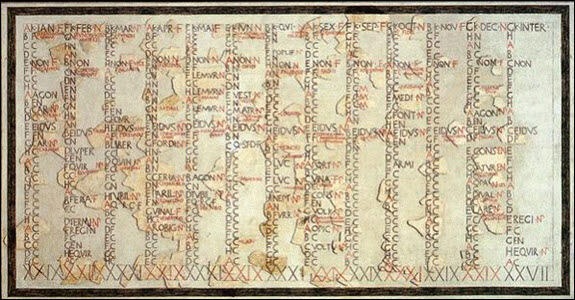
In the table below, NASA’s old Julian dates that correspond to the lunar phases of the years are given in the left column. The highlighted years are the most popular choices for when the Crucifixion occurred. The designation of “P” identifies a partial solar eclipse, which can only occur during the daylight of the conjunction of the dark moon in the middle of the month. Similarly, the “p, t, or n” identifies the partial, total, or penumbral eclipse of the full moon, which occurs only at the beginning of the month.
None of the dates give times that accurately locate the solar eclipse that occurred at noon on the day of the Crucifixion. But remember that each dark lunar phase is dark because it is in conjunction with the sun in very close proximity. So, the fact remains: either NASA’s UTC time signature is off, or the Almighty Father utilized a non-scheduled event to create the darkest and lengthiest solar eclipse ever recorded.
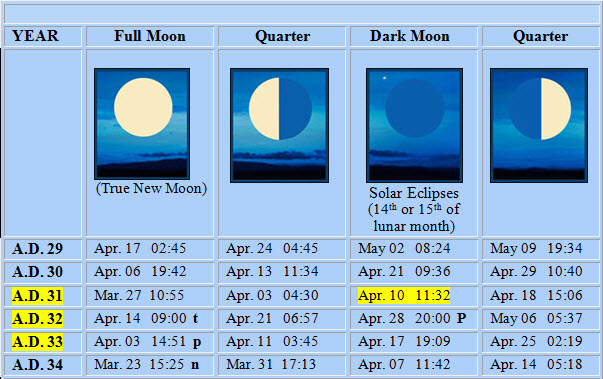
[Most of the world today that holds a calendrical significance for the moon commence their months either with the dark moon, calling it New Moon, or in sync with ancient Babylon’s crescent moon god “Sin.” This causes the middle of their month to occur at or near the full moon. This is exactly the opposite of Scripture’s portrayal of the sun being darkened at noon for three long hours at the Crucifixion of the Promised Messiah. An explanation of this enormous length of time is given at this link:
http://www.TheCreatorsCalendar.com/studies/Luke_23_44-45.html
The above dates have already had the 11 days removed by NASA, so they are in sync with the Vernal Equinox. Also, each of the “full” New Moons above arises in the constellation of Virgo, and on March 27, the full moon arises “under her feet.”
The “Ides of March,” the 15th of the Roman calendar, occurs several days before the first day of Spring (March 19-21). So, it could never be the middle of the old Hebrew lunar month of Abib, which commenced on the first “full” moon after the vernal equinox.
While there appears to have been a partial solar eclipse in A.D. 32, I still believe A.D. 31 fits the model better, bringing the sun and moon together closer to the Jerusalem target.
You are encouraged to do your own research at the NASA Eclipse link below.
http://eclipse.gsfc.nasa.gov/phase/phases0001.html
Below is an illustration for the Hebrew lunisolar calendar year correlating to A.D. 31. Here it can be seen how the Julian date of April 10 actually occurs on the Crucifixion, the day of the dark moon, the only day of the month a solar eclipse can occur. The Julian “Ides of March” has occurred 21 days previously and is, therefore, of a spurious nature. Additionally, this calendar depicts the thirteen lunar months that occur every two to three years. Of special notice are the lunar weeks and their Sabbaths as they were divinely Exclusive: Cowboys Great Darren Woodson Reacts To Safeties Going into Canton – 'Awesome!' – FanNation Dallas Cowboys News, Analysis and More coordinated to fall on specific dates each month perpetually. Along with the dates, the seven-day weekly cycle is refreshed following the appearance of each “full” New Moon. Of particular interest is that in A.D. 31, the lunar month of Abib commenced at the very end of March and corresponded mostly with the Roman month of April. So here is why the “Ides of March” (15th) is not correct.]
I [Pilate], the continued governor of a rebellious province, was leaning against a column of my basilica, contemplating athwart the dreary gloom these fiends of Tartrus dragging to execution the innocent Nazarene. All around me was deserted. Jerusalem had vomited forth her indwellers through the funeral gates that lead to Gemonica. An air of desolation and sadness enveloped me. My guards had joined the cavalry, and the centurion, with a distressed play of power, was endeavoring to keep order. I was left alone, and my breaking heart admonished me that what was passing at that moment appertained rather to the history of the gods, than that of men. A loud clamor was heard proceeding from Golgotha, which, borne on the winds, seemed to announce an agony such as was never heard by mortal ears. Dark clouds lowered over the pinnacle of the temple, and setting over the city covered it as with a veil.
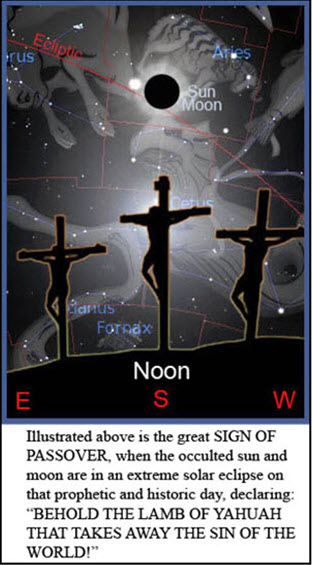
[This is an odd statement because Matthew records there was an earthquake right there in Jerusalem, declaring that even the rocks were rent, which would have certainly been felt by Pilate, so this portion appears to be fictitious, putting the earthquake only in Egypt, another example of this point is the writing of another. It is possible that the earthquake extended to Egypt in addition to Jerusalem.]
It is said Balthazar, an aged and learned Jew of Antioch, was found dead after the excitement was over. Whether he died from alarm or grief is not known. He was a strong friend of the Nazarene.
THE SACRIFICE WAS CONSUMMATED
THEY ALL SLUNK OFF LIKE COWARDLY CURSE
“Father,” said I to him, after gaining control of my feelings,” who are you, and what is your request?”
PERMISSION TO BURY JESUS OF NAZARETH
“I am Joseph of Arimathaea,” replied he, “and am come to beg of you upon bended knees the permission to bury Jesus of Nazareth.”
“Your prayer is granted,” I said to him, and I ordered Manilus to take some soldiers with him to superintend the interment, lest it should be profaned.
When the great excitement arose about the sepulcher being empty, I felt a deeper solicitude than ever. I sent for Malcus, who told me he had placed his lieutenant, Ben Isham, with one hundred soldiers, around the sepulcher. He told me that Isham and the soldiers were very much alarmed at what had occurred there that morning I sent for this man Isham, who related to me, as near as I can recollect, the following circumstances; He said that at about the beginning of the fourth watch;
[At the end of the day, this letter appears to be a mixture of truth and error, exposing its inconsistencies with Scripture, history, and astronomy. It reveals that both this historical manuscript and the Greek New Testament have been altered, specifically the portions depicting the time of the Resurrection being “early in the morning” on the first day of the week. How might the “Fourth Watch on the Day of Resurrection add 24 hours to the sign given by the Messiah of “three days and three nights?” The portion that appears unaltered is the account of the Resurrection, which includes an incredible depiction of the rapturous joy of all those who were resurrected along with our Messiah, even giving the correct time of the night. What an experience that must have been for the soldiers to behold. For more information on when the Resurrection occurred, click this link – Three Days and Three Nights.]

